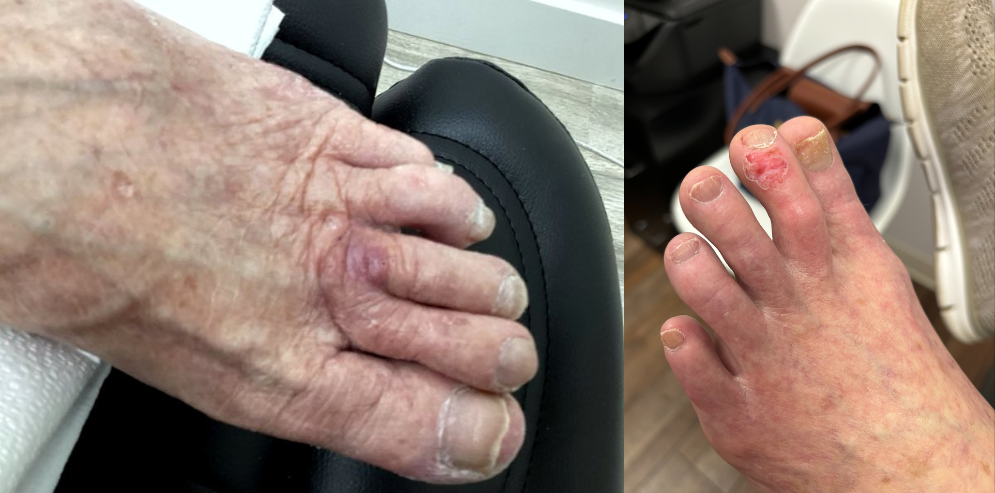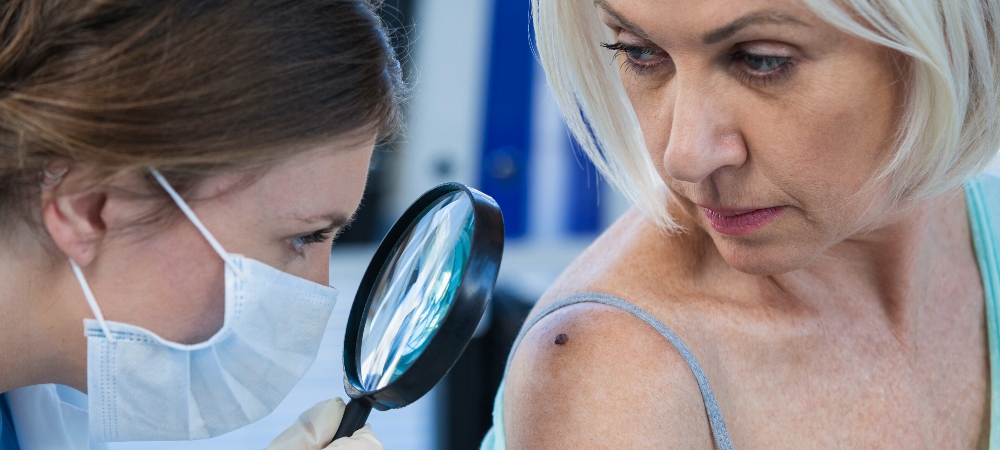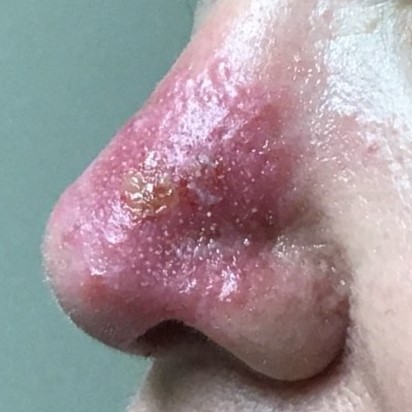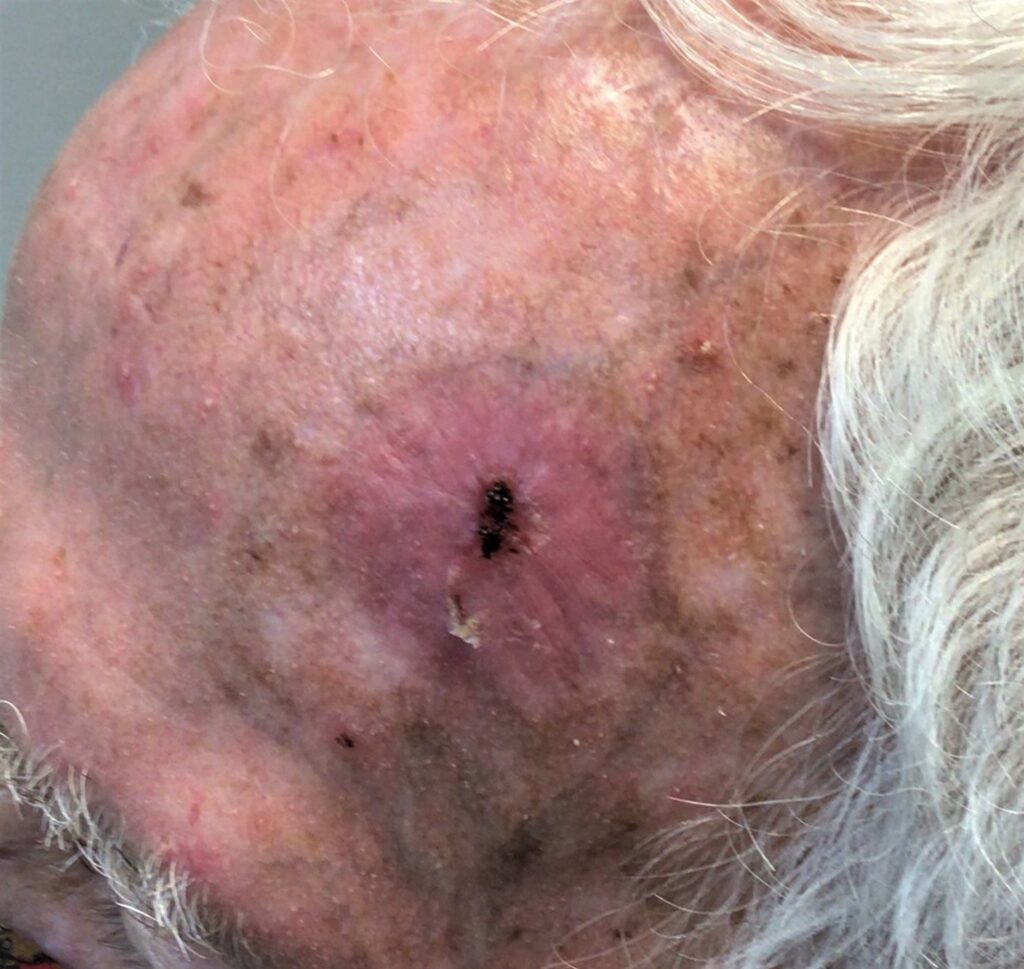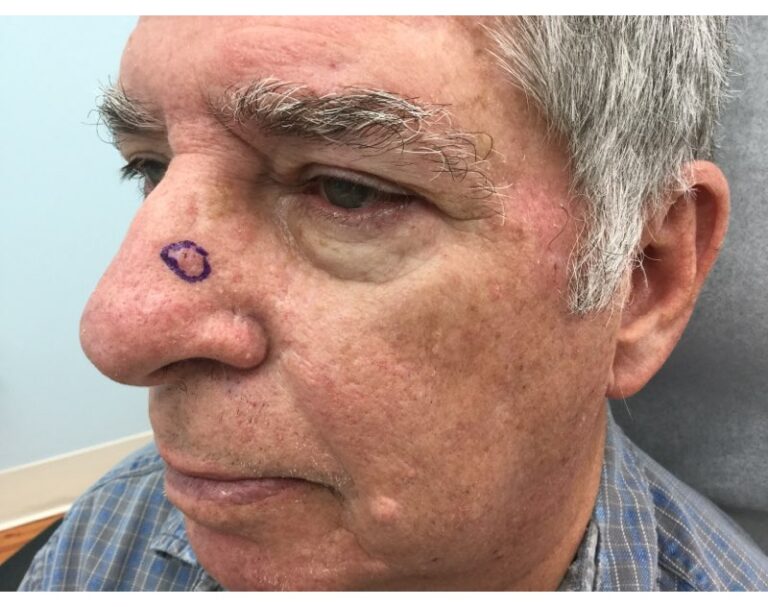
There are many different ways to treat skin cancer, including surgery, radiation, and topical therapies. One of the most common treatments is Mohs surgery. Mohs surgery has been the standard treatment for skin cancer for many years. During surgery, the skin cancer is cut out of the skin, causing a painful wound and leaving a scar. Mohs surgery can only treat 1 skin cancer at a time and often involves multiple surgeries in 1 day. After the surgery, you may experience side effects and your daily activities may be restricted. In addition, the scarring may require reconstructive surgery.
Fortunately, for people with skin cancer looking to avoid stitches, bleeding, wounds, recovery time, and surgical scars, Mohs surgery is NOT the only option. Instead, radiation is a safe and effective way to treat skin cancer without surgery. There are several types of radiation used in the treatment of skin cancer.
What are the types of radiation used to treat skin cancer?
There are 4 types of radiation available for treating skin cancer. Each radiation type uses specific machines and procedures with different results, side effects, and patient satisfaction levels.
Image-Guided Superficial Radiation Therapy (Image-Guided SRT)
Image-Guided SRT delivers low-energy X-rays that send the radiation only as deep as the skin. The X-rays are similar to what is used at your dentist’s office and have little effect on the healthy area around the cancer. Image-Guided SRT is given right in the dermatologist’s office by a Radiation Therapist who works together with your dermatologist. Ultrasound images are used to measure the size and depth of the skin cancer to help your treatment team know the exact dose of X-rays needed. The images also help the dermatologist track how the cancer is responding and help you see when the cancer shrink until it is gone.
Image-Guided SRT has been shown to cure over 99% of basal or squamous cell skin cancers, with only mild to moderate side effects. In addition, satisfaction with the outcome and treatment experience is over 99%.
Superficial Radiation Therapy (SRT)
SRT uses a special machine to deliver low-energy X-rays to the skin’s surface. For this procedure, the dermatologist does not use imaging, so the size and shape of the skin cancer area is estimated. The treatment team and the person getting SRT cannot see how the cancer is responding or if it is gone. SRT has been shown to cure the majority of basal and squamous cell skin cancers, with mild to moderate side effects. Most patients approve of the overall outcome and treatment experience.
Electron-Beam Radiotherapy (EBRT)
EBRT delivers electron-beam energy to the skin through a large machine at a radiation treatment center or hospital. It is often used on skin cancer deeper below the skin’s surface. The energy dosing used for EBRT is higher than that for SRT. EBT aims the radiation at the entire area of the body where the cancer is located. Mild to moderate side effects have been reported. While most patients approve of the outcome and treatment experience, overall cure rates with EBRT are lower for nonmelanoma skin cancers than other types of skin cancer radiation.
Electronic Brachytherapy (EBX)
EBX uses a special machine to deliver X-rays with very high doses of radiation. It is often used for smaller skin cancer areas, with mild to moderate side effects. There is very little scientific evidence on how well EBX works, and less than half of patients approve of the outcome and treatment experience.
Finding the best treatment option for you
With a variety of treatment options available for skin cancer, it can be hard to know which one is best for you. Talking with your dermatologist about all of your options can help. If your dermatologist only offers one specific option and doesn’t talk about any alternatives, or if you don’t feel comfortable with the treatment your dermatologist recommends, you have the right to a second opinion. You should have a voice in your treatment decision and feel confident working alongside your dermatologist to find the option that is best for you. The following resources can help in your discussion and in finding a dermatologist who suits your needs.
